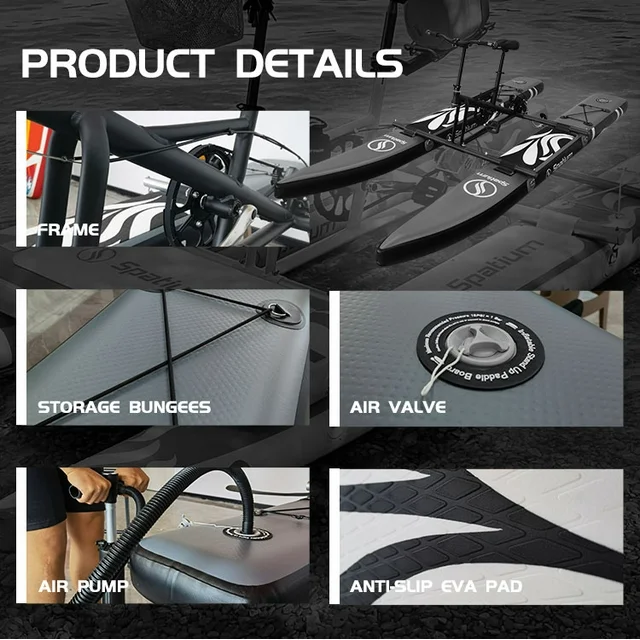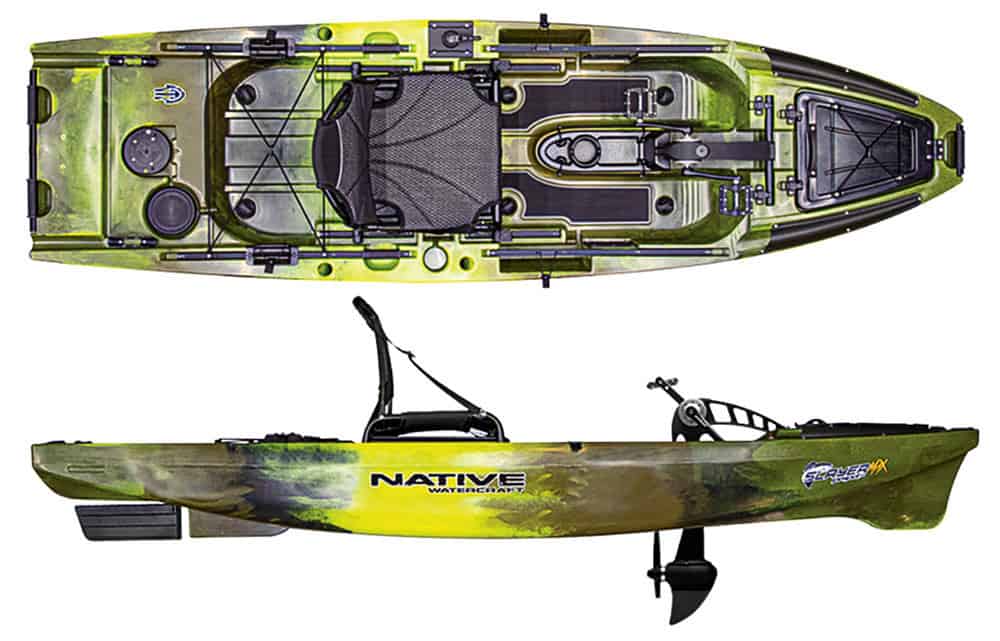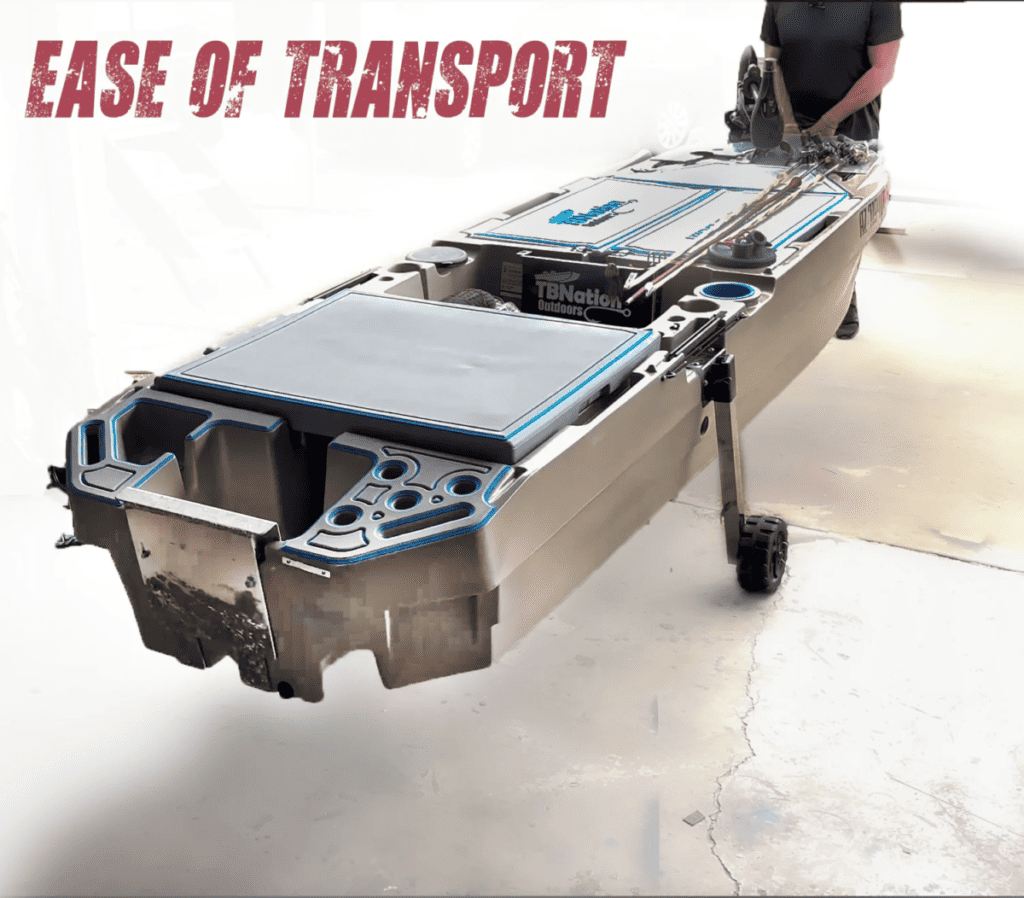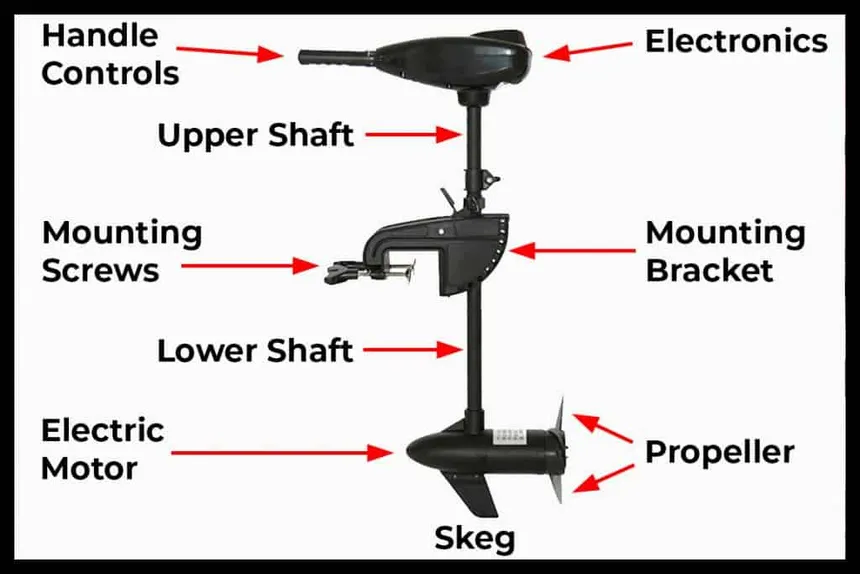Resend Activation Code
Please enter your registered email address here so that we can resend you the activation link.
Please enter your registered email address here so that we can resend you the activation link.
Kayak length is a very important factor to consider when choosing the perfect kayak for your paddling needs. Here’s how the length of a kayak affects its performance:
Shorter Kayaks (Under 12 ft)
Mid-Length Kayaks (12 ft to 14 ft)
Longer Kayaks (15 ft and above)
Here are some additional factors to consider alongside kayak length:
Here’s a breakdown of the pros and cons of sit-in vs. sit-on-top kayaks to help you decide which is better for you:
Sit-in Kayaks
Pros:
Cons:
Sit-on-Top Kayaks
Pros:
Cons:
Choosing the Right Kayak:
The best kayak for you depends on your priorities and paddling style. Here are some factors to consider:

The Spatium Water Bike Inflatable Pedal Boat Sup is an inflatable pedal kayak that combines the features of a bicycle, kayak, and stand-up paddleboard. It is available at Walmart.com . Here are some of its features:

Spatium Water Bike Inflatable Pedal Boat Sup Inflatable Pedal Kayak Water Bikes for Lake Fishing Pedal Boat More Stable and Easy to Drive on Water at Walmart.com
Here are some things to consider before you buy a Spatium Water Bike Inflatable Pedal Boat Sup:

Overall, the Spatium Water Bike Inflatable Pedal Boat Sup is a unique product that may be a good option for someone looking for a stable and easy-to-use pedal kayak. However, it is important to consider the price, portability, and lack of reviews before making a purchase.


I can provide information on some of the best fishing kayaks available at Walmart.com in 2024 to help you make an informed decision:
![Best Fishing Kayaks 2024 [don’t buy one before watching this] Boat Reviews, At Walmart.com](https://kayaksboats.com/wp-content/uploads/2024/04/image-1024x800.png)
Factors to Consider When Choosing a Fishing Kayak:
Top Fishing Kayaks at Walmart (availability and price may vary):
Additional Tips:
Remember, the “best” fishing kayak depends on your individual needs and preferences. By considering the factors mentioned above, you can narrow down your choices and find the perfect kayak for you!

I can provide information on factors to consider when choosing a fishing kayak in 2023 to help you make an informed decision:
Key Considerations:
Here are some popular fishing kayaks in 2023 to get you started (These are not necessarily the best):
Additional Tips:
Remember, the “best” fishing kayak depends on your individual needs and preferences. By considering the factors mentioned above, you can narrow down your choices and find the perfect kayak for you!

Here’s a breakdown to help you decide whether to install flooring in your Sun Dolphin American 12:
Pros of installing flooring:


Cons of installing flooring:
Here are some additional things to consider:
Online resources:
Ultimately, the decision of whether or not to install flooring in your Sun Dolphin American 12 is up to you. Weigh the pros and cons, consider your needs and preferences, and do your research to make an informed decision.
The Youtube video:

Life Skiffs are popular for their small size, maneuverability, and affordability. They’re great for fishing inshore waters, flats, and calm rivers. Here’s how trolling with a life skiff differs between online research and real-world application:

Online Research:

On the Water:

Here are some additional things to consider:
Life Skiff vs. Traditional Trolling Boat:

Ultimately, trolling with a life skiff can be a productive and enjoyable way to fish. Just be mindful of its limitations, prioritize safety, and adapt your trolling techniques to this smaller, more nimble boat.

The Lite Skiff definitely poses a challenge to kayaks, especially for certain users. Here’s a breakdown of the pros and cons to see if it might replace your kayak:
Lite Skiff Advantages:
Lite Skiff Disadvantages:
So, will Lite Skiffs replace kayaks entirely? Probably not.
Here’s who might prefer a Lite Skiff:
Here’s who might still prefer a kayak:
There are two main ways to acquire a Lite Skiff:
Here are some additional tips for finding a Lite Skiff:

Installing an electric trolling motor on your kayak can be a game-changer, opening up new possibilities for exploration and fishing. However, choosing the right method and ensuring proper installation are crucial for both safety and performance. Here’s a breakdown of the key factors to consider:
Mounting Methods:

Installation Tips:
Performance Considerations:

Mounting a trolling motor on your kayak opens up a world of possibilities for exploring and fishing further, but choosing the right method is crucial for both safety and efficiency. Here are the top ways to mount a kayak trolling motor:
Transom Mount:

Side Mount:
Deck Mount:
Additional Considerations:

Safety:

Group Dynamics:

Additional Tips:

Remember:
By following these common rules and putting safety first, you can ensure a fun and enjoyable kayaking experience for everyone in your group.